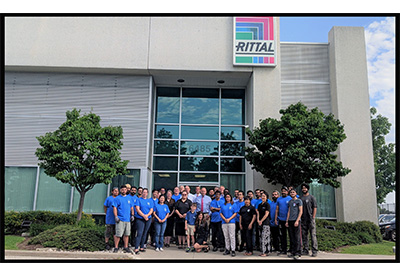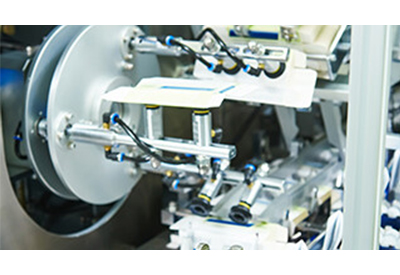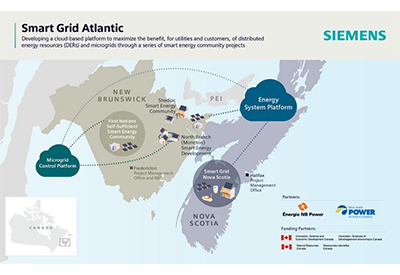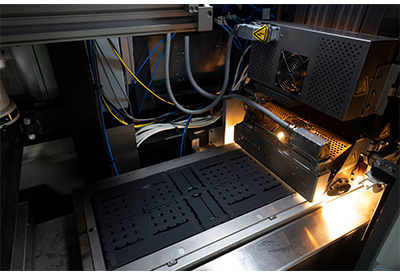Discussing the Potential of Hydrogen as a Renewable Energy Source in light of NB Power’s recent Agreement with Joi Scientific

March 25, 2019
By Blake Marchand
New Brunswick Power recently struck a deal with Joi Scientific to develop an innovative technology that generates electricity by extracting hydrogen from sea water without producing green house gas emissions. But can the technology provide a legitimate alternative to our reliance on fossil fuels?
The goal of the deal (the financial details of the investment have not been disclosed, though reports have suggested it’s $13-million) with the Kennedy Space Centre start-up is to develop the technology to the point where they can convert the Belledune generating station to hydrogen power by 2030, which corresponds with Canada’s coal phase out. NB Power had previously scheduled to run its coal operations to the life of the facility, around 2044. Putting them in a fairly difficult position. However, with this recent announcement, it has yet to be answered if the burgeoning technology can supplement that production.
The technology itself is not necessarily new, but generating hydrogen power is generally considered too costly. In Japan, the city of Kobe finished the development of a hydrogen power plant in 2018, although Panel Builder & Systems Integrator was unable to verify the success of the project. While the first hydrogen power plant has been operating since 2009 in Italy, although the process does in volve petrochemicals. San Bernardino and Hydrogenics entered into a similar agreement as NB Power and Joi Scientific in 2016 to develop the world’s largest 100% renewable hydrogen plant. Toyota and Honda have also made headway, investing in the technology, and developing hydrogen powered vehicles. Highlighted by the 2019 Toyota Mirai and the 2019 Honda Clarity. 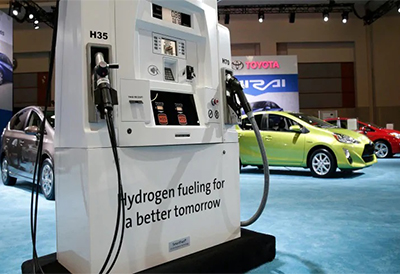
The process requires electricity to separate hydrogen from water, so to remain truly sustainable and environmentally friendly, renewable energies like solar or wind should be utilized in the process. The $7-million investment will go to fund further research and development of Joi Scientific’s technology. Which is touted as clean, affordable, “and with no carbon emissions,” on the company’s website.
“Traditional methods to isolate and store it put in more energy than they extract. For decades, this outdated approach has proven to be an expensive and inefficient way that has prevented the widespread use of this abundant element as a source of clean and affordable energy,” explains their website. However, absent is exactly how.
Joi Scientific’s Vicky Harris told CBC they are “involved in multiple research projects, in many different sectors, but, as I am sure you would understand, we are not sharing details of our proprietary research and development work at this time.”
In the past, the extraction and transmission of hydrogen power required a considerable amount of electricity as well as a considerable amount of fresh water, making the process costly, eliminating its environmental benefits, and using up a crucial resource in fresh water. The process of electrolysis is more viable with fresh water, as opposed to salt water, because of the corrosion caused by negatively charged chloride in salt water. [1] The process requires large amounts of water, making the use of fresh water inviable. 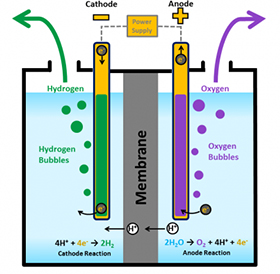
Researchers out of Lancaster University are exploring how the use of quantum technology and solar power could make the process more viable. “The key is in using nanoparticles to boost the efficiency of photoelectrochemical cells, or PECs,” explains David Nield of Science Alert. PECs are panels/cells that convert water to hydrogen and oxygen via electrolysis. [2]
However, Dr. Manus Hayne of Lancaster’s physics department – where the research was conducted as part of Dr. Sam Harrison’s PhD research – said that, “To the authors’ best knowledge, this system has never been investigated either theoretically or experimentally, and there is huge scope for further work to expand upon the results presented here.” Adding that, “Fossil-fuel combustion releases carbon dioxide into the atmosphere, causing global climate change, and there is only a finite amount of them available for extraction. We clearly need to transition to a renewable and low-greenhouse-gas energy infrastructure, and renewable hydrogen is expected to play an important role.” [3]
The study recognizes the massive potential of the technology. Hydrogen can be stored easily and used when needed, making it viable for remote areas, as well as incredibly flexible. “It can be converted to electricity in a fuel cell or burnt in a boiler or cooker just like natural gas. It can even be used to fuel aircrafts.” [3]
Electricity is required in order to produce hydrogen power, ideally that would also come from renewable resources such as solar power, as theorized in the Lancaster study. Semiconductor nanoparticles would increase the voltage created by solar power, ultimately powering the conversion. Hydrogen can then be stored in fuel cells and converted to electricity when needed. It can also be transported to consumers in a similar way as electricity.
A fuel cell produces electricity by combining hydrogen and oxygen. “Fuel cells are often compared to batteries,” explains Renewable Energy World, “Both convert the energy produced by a chemical reaction into usable electric power. However, the fuel cell will produce electricity as long as fuel (hydrogen) is supplied, never losing its charge.”
The only waste by product is water. Which can then be used in the electrolysis process again, or even be drank. Although the latter is specific to fresh water. Renewable Energy World explains, “NASA has used liquid hydrogen since the 1970s to propel the space shuttle and other rockets into orbit. Hydrogen fuel cells power the shuttle’s electrical systems, producing a clean by-product – pure water, which the crew drinks.”
A study that was recently published out of Stanford University devised a method to generate hydrogen fuel from salt water using solar power.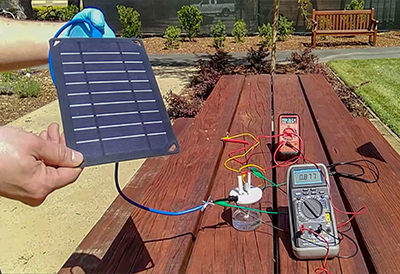
One of the main issues with previous technologies is that salt water corrodes the positive electrode, limiting lifespan and the level of current that can be generated. To avoid corrosion the researchers used layers of nickel-iron hydroxide and nickel sulfide. The layers repel the corrosive chloride increasing the electrode’s lifespan from around 12-hours to over 1000-hours. As a result of the protective layers they are also able to increase the electric current by about 10-times what previous technologies were able to accomplish, because corrosion increases at higher currents. [4]
“The impressive thing about this study was that we were able to operate at electrical currents that are the same as what is used in industry today,” said Michael Kenny, a graduate student that was co-lead author of the paper, referring to electrolysis using fresh water. [4]
The experiment was conducted in a controlled laboratory setting, but the research should provide a jumping point for those developing the technology for commercial wide-spread use. “It’s not like starting from zero – it’s more like starting from 80 or 90 percent,” said Hongjie Dai, Chemistry Professor and co-lead author of the study. The experiment ultimately provides proof of concept, but it will be up to manufacturers to implement the design on a large scale. [4]
While there are skeptics, particularly when it comes to NB Power’s involvement with Joi Scientific, the technology is being researched all around the world given the scope of its implications with respect to providing an alternative to fossil fuels. If NB Power and Joi Scientific are successful in creating a hydrogen based electrical grid it would obviously have massive implications on clean, renewable energy. Potentially powering everything from homes and buildings to cars and trucks. Ultimately, providing a blueprint for adoption across the industry.
The need for immediate, and significant action on reducing fossil fuels cannot be understated. The Intergovernmental Panel on Climate Change (IPCC) determined in their 2018 report – consisting of 91 lead authors and 133 contributing authors across 40 countries – that immediate action is required in order to limit global warming to 1.5° Celsius. The 2015 Paris Agreement on climate change marked 2°C (above pre-industrial levels) as the target, although that would still significantly alter the Earth’s ecosystem. The IPCC report found that at current rates the planet would likely reach 1.5°C between 2030 and 2052. [6]
A summary on the report explains, “Future climate-related risks depend on the rate, peak and duration of warming. In the aggregate, they are larger if global warming exceeds 1.5°C before returning to that level by 2100 than if global warming gradually stabilizes at 1.5°C, especially if the peak temperature is high (e.g., about 2°C). Some impacts may be long-lasting or irreversible, such as the loss of some ecosystems.” [6]
The summary noted that global warming adaptation and mitigation is already occurring, but added that, “Future climate-related risks would be reduced by the upscaling and acceleration of far-reaching, multilevel and cross-sectoral climate mitigation and by both incremental and transformational adaptation.” [6]
The report provided various avenues for a potential stabilization. National Geographic explains in their summary of the report that “these solutions all require unprecedented efforts to cut fossil-fuel use in half in less than 15 years and eliminate their use almost entirely in 30 years.”
To put that in perspective: “This means no home, business, or industry heated by gas or oil; no vehicles powered by diesel or gasoline; all coal and gas power plants shuttered; the petrochemical industry converted wholesale to green chemistry; and heavy industry like steel and aluminum production either using carbon-free energy sources or employing technology to capture CO2 emissions and permanently store it.” [7]

